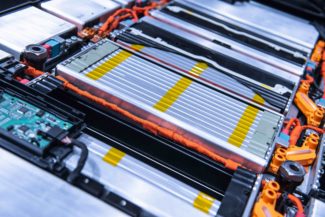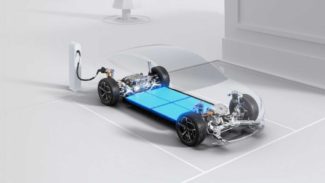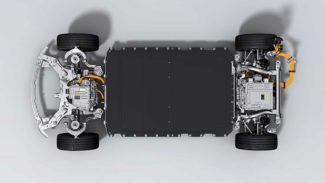What if tomorrow the energy in electric cars was no longer stored in batteries as we know them now, but in the very structure of vehicles, such as the floor or the body? This is the technology of structural batteries that rely on multifunctional materials. This technological achievement could reduce the weight of vehicles and thus increase their autonomy.
What is it?
Strictly speaking, there is nothing new about the concept of structural batteries. In 2007, soldiers in the US Army research laboratory made a first attempt to manufacture one from structural material capable of storing electricity. While it showed good mechanical properties, on the other hand, it offered poor electric insulation.
Other scientists around the world have also sprung into action. The most advanced are the Swedes at Chalmers University in Gothenburg, associated with those at the KTH Royal Institute of Technology in Stockholm. In 2021, they presented a battery whose anode (positive electrode) is made up of carbon fibres and the cathode (negative electrode) from aluminium thread covered with lithium phosphate and iron. A glass fibre separator allows the circulation of ions, as the electrolyte (conductive material) itself is made up of polymers. The operating principle is thus identical to lithium electrochemical batteries known currently, except that the materials used are different.
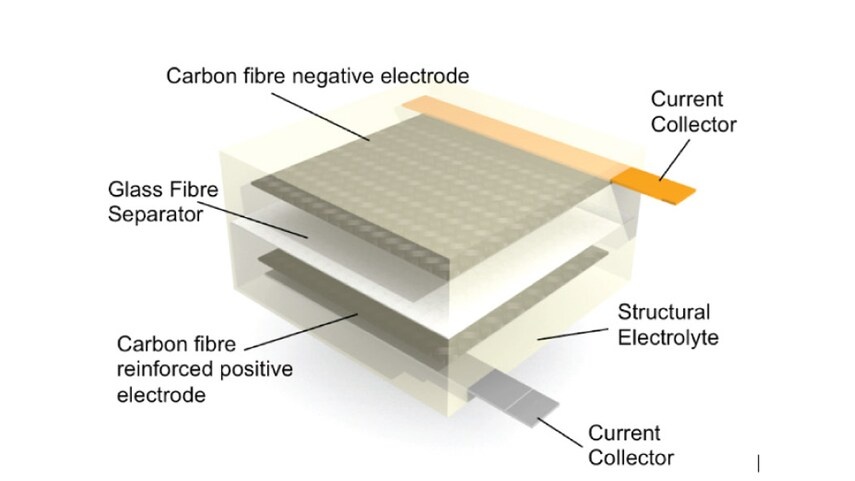
The resistance to distortion of this prototype is 25 GPa, which is sufficient to compete with other materials in structural bonding and foresees industrial use. On the other hand, in spite of its 24 Wh/kg energy density, i.e. ten times higher than previous attempts to produce a structural battery, it only represents 20% of that of currently marketed lithium-ion batteries.
Huge potential
This currently lower density does not present an unsurmountable challenge because as a result, structural batteries will make vehicles considerably lightly and consequently increase their autonomy. Some experts argue that a reduction by half of the total mass of a vehicle, with the same battery capacity, allows its autonomy to double. This is a huge step forward in the construction of electric vehicles: currently, the mass of a lithium-ion battery can represent up to one third of the total vehicle mass. This is why electric propulsion is, for example, limited in some fields like aeronautics.
Teams working with Professor Asp at Chalmers University have benefited from financial support from the Swedish Space Agency in order to continue the development of their structural battery. By replacing the aluminium in the cathode with carbon fibres and the electrolyte with a thinner variant, the overall rigidity, as well as the density and charge cycles will be improved. According to Professor Asp, it will be possible to obtain an energy density of 75 Wh/kg and a rigidity of 75 GPa. The battery will then be as solid as an aluminium sheet, while only weighing a fraction of one. The range of applications will thus be considerably extended, from smartphones to planes as well as bicycles and cars.
The saved space will also be considerable; the battery will take the form of very fine levels of composite materials that will be integrated into the bodywork of a car, for example. Only several micrometres wide, it will be able to be integrated into any kind of structure, thus not posing any design constraint, for example.
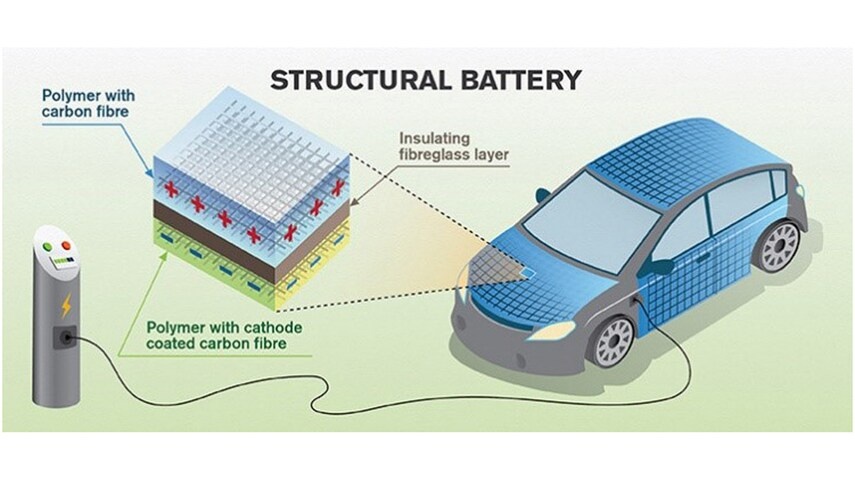
Structural batteries à la Tesla
Always one step ahead, Tesla is already flaunting its structural batteries. The technological progress is not as cutting edge as the Swedish project. The new lithium-ion “4680” batteries (for 46 mm diameter and 80 mm high cells, against the previous “2170”) by the American manufacturer get their “structural” dimension from smart integration on board the vehicle. In fact, due to the larger volume cells, the battery pack is set out directly on the floor of the vehicle on to which the seats and the interior furnishings will be placed. The floor battery is manufactured as a single piece using an 8000-tonne press, which requires less steel components inside the battery, as well as a number of welding spots divided by 10. The weight saved is around 25 kg compared to previous generations of batteries.
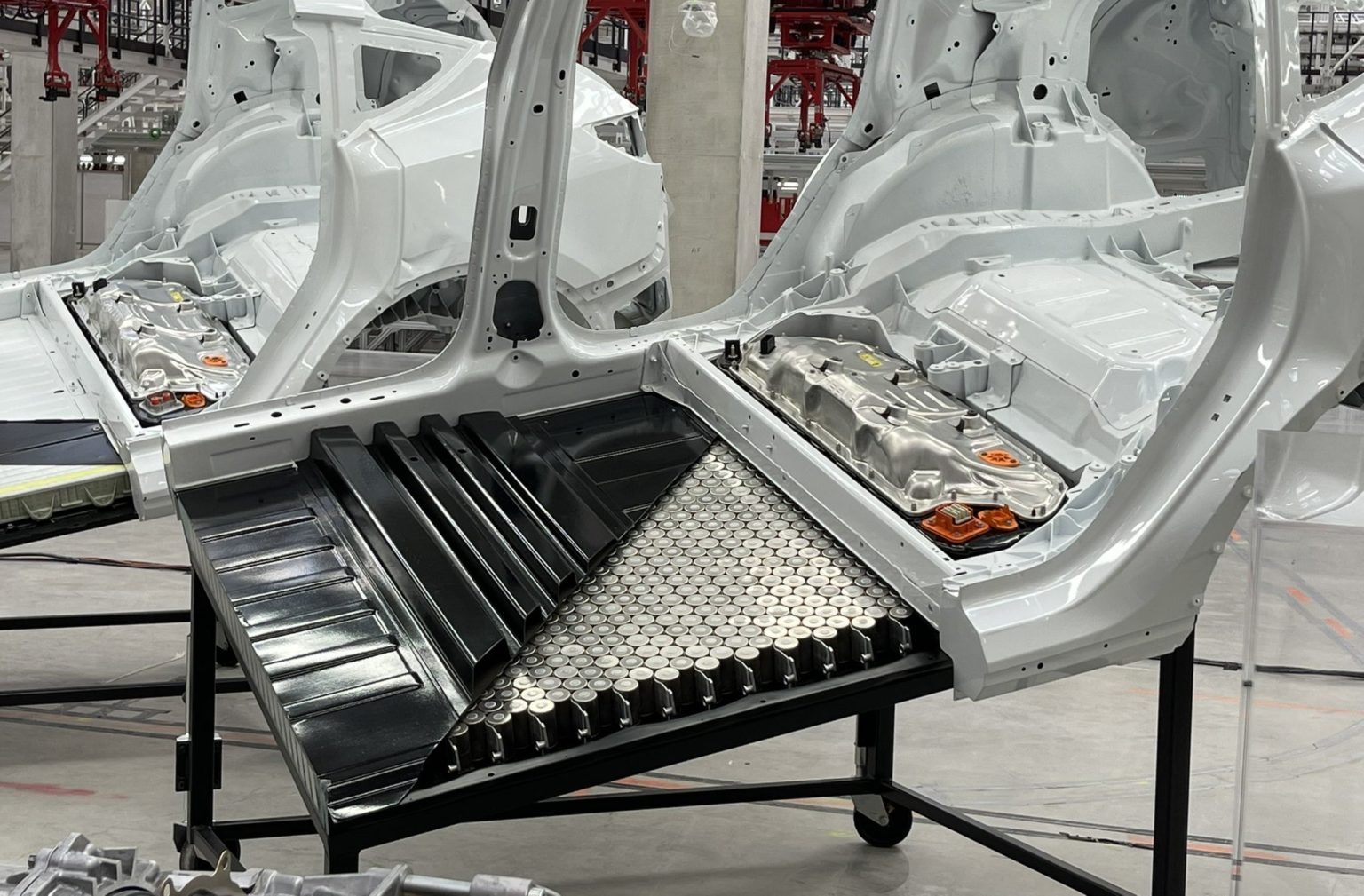
All these improvements allow the cost of manufacturing to decrease by around USD 5000 per battery, which is a considerable sum. To date, only the Model Y manufactured in Texas is equipped with it. The 3, S and X models should be fitted with it in the next few months.
And what about China?
The Middle Kingdom, which is very active in manufacturing batteries, isn’t just resting on its laurels. Three main generations of batteries can be found in China. The first, similar to the one we know in our region, is called “Cell-to-Module” (CTM). The individual cells are assembled into modules which themselves constitute the battery pack, with the same disadvantages in terms of the number of parts, weight and overall cost that we experience as well.
The second generation is called “Cell-to-Pack” (CTP). The manufacturers CATL and BYD are the pioneers of this construction approach which they presented in 2019 and 2020, respectively. More specifically, this type of battery does away with the modules which makes it possible to place the cells directly into the battery pack itself. The result is an increase in weight and optimisation of the gravimetric and volumetric energy density. In other words, less bulk and weight for more power.
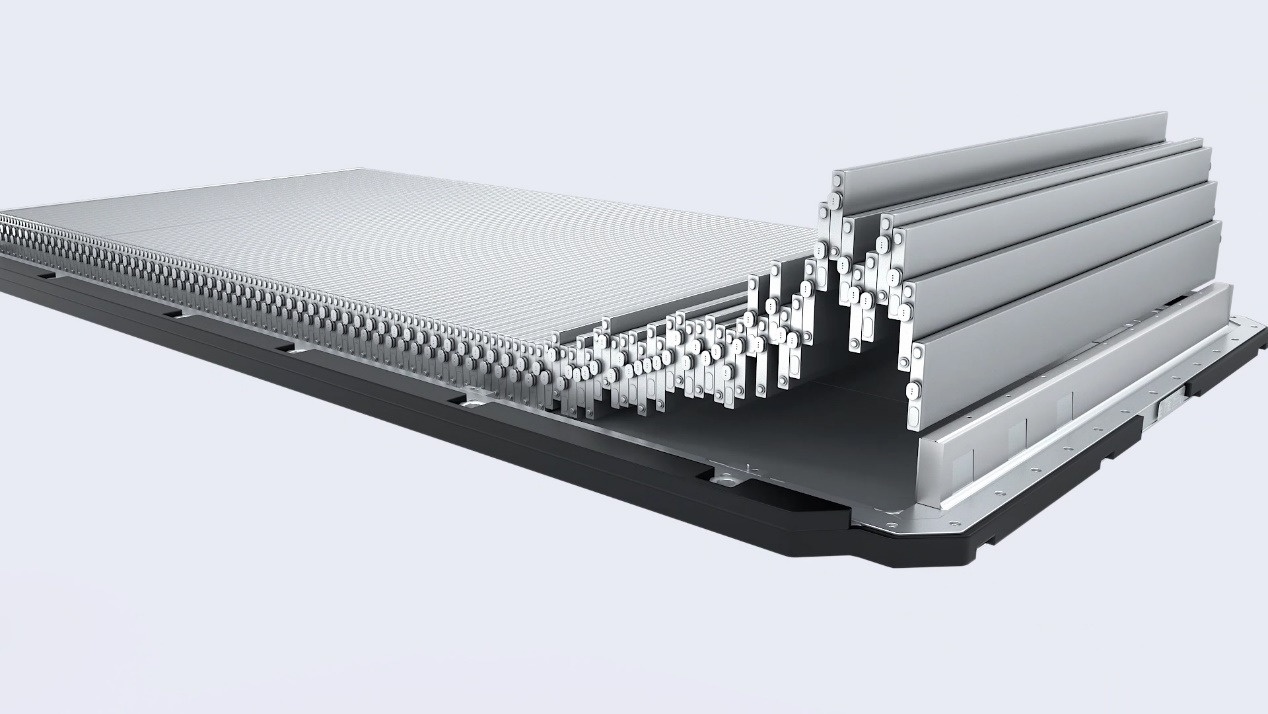
In 2022, BYD and Leapmotor unveiled the third generation of batteries called “Cell-to-Body” (CTB) and “Cell-to-Chassis” (CTC), respectively. The progress made on new electric vehicle platforms now makes it possible to integrate the cells directly into the very structure of the vehicle, similar to what Tesla does with its Texas Model 3. BYD presented its BYD Seal sedan at the last Paris Motor Show, which will hit European roads next year. It will come equipped with a CTB battery integrated into its platform.
Structural batteries will certainly be a considerable revolution for the car industry and transport sector overall, from road to sky. There is, however, the sizeable risk of seeing huge investments granted today by automobile manufacturers to make conventional batteries being affected considerably and permanently and even becoming obsolete.
Shutterstock/Chalmers University/Tesla/BYD/GIMS/JM

